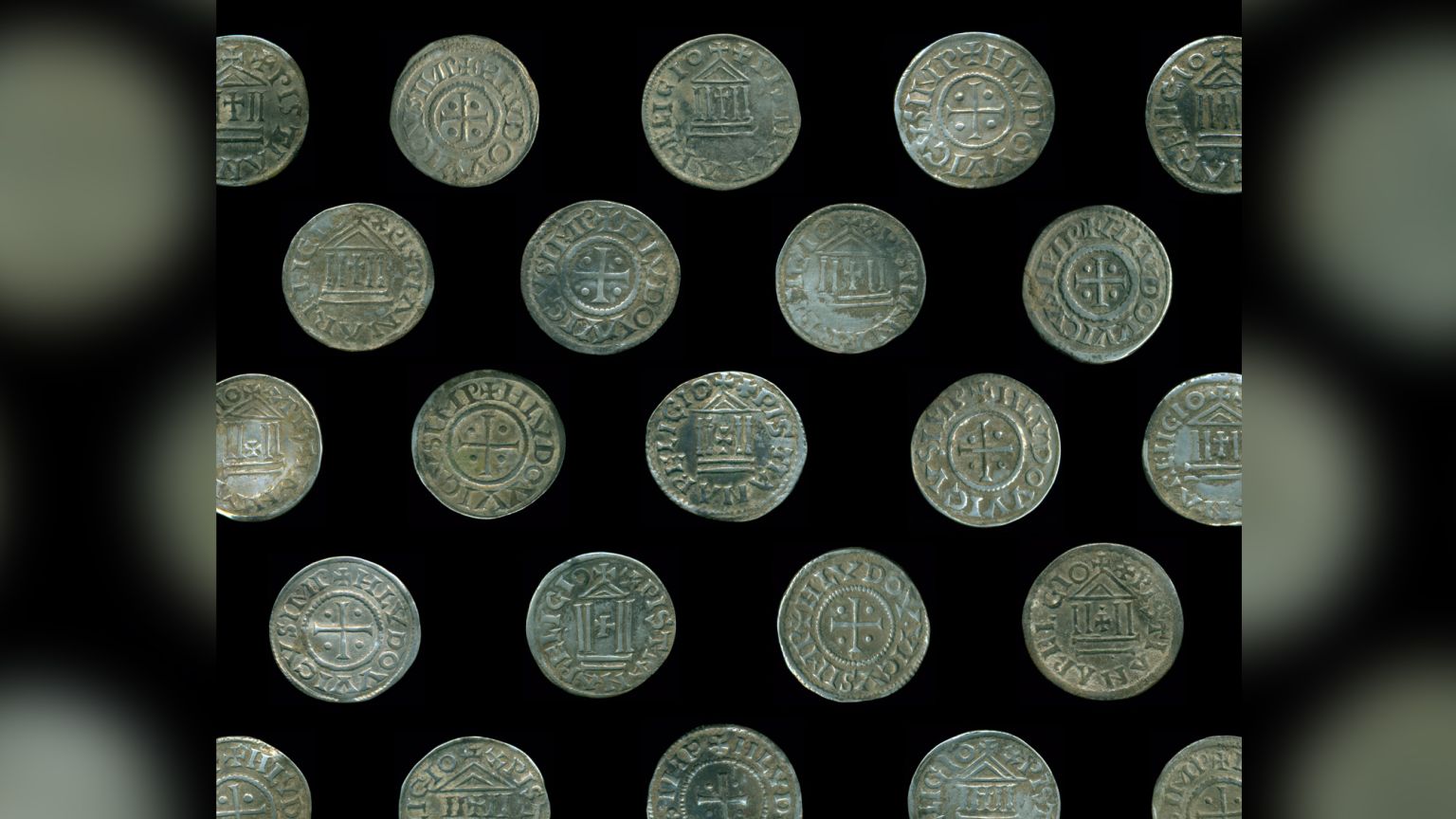Boží 
 jako mincičkář mohu jen slintat ....
jako mincičkář mohu jen slintat .... 
Detectorists have found a rare set of Carolingian silver coins, possibly from a Viking ransom
Categories: Minting - Numismatics , Treasures , Nálezy nejenom s detektorem kovů ve východní Evropě
In a field near the town of Biskupiec in northeastern Poland, detectorists have discovered a treasure trove of silver coins from the Carolingian period. The roughly 1,200-year-old coin set may have been part of a historic ransom to protect Paris from a Viking invasion. It is an extremely rare find in Poland, with only three similar coins found in the entire country so far...
The detectorists, who searched the field legally with the permission of the provincial government, discovered the first silver coins in as early as November last year. After discovering that these were very rare coins from a single set, they stopped further searching and contacted experts from the nearby Ostróda Museum. They and the experts kept the site secret and guarded it from illegal detectorists until March this year. Archaeologist Lukasz Szczepanski and his team of detectorists discovered a total of 118 coins at the site. Except for one coin of Charles II. All the other coins belonged to Emperor Louis I. Pious, who ruled from 814 to 840.
The Carolingian Empire in the eighth and ninth centuries covered most of what is now France, Germany, Switzerland and northern Italy. Archaeologists believe the newly found coins may have come from the Viking trading city of Truso, which was located near the Baltic coast about 100 kilometres west of the field where the collection was found.
If the coins did indeed come from Truso, it is possible that they were part of a huge ransomof gold and silver paid by the Carolingian king in an attempt to prevent a Viking attack on Paris: "If a larger number of coins can be attributed to Paris, then yes, it is possible - and some have already been attributed to Paris," said Mateusz Bogucki, an archaeologist and numismatist in Warsaw. "But it is too early to make such an interpretation," he told Live Science. "It seems that the owner of the hoard acquired the coins in the city of Truso. But there is also the possibility that they arrived here from elsewhere and were used in Truso for trading. The coins have no markings that define exactly where and when they were minted, but we can learn more about their origins by studying, for example, the shapes of the letters in their Latin inscriptions."
Experts are not sure under what circumstances the silver coins were hidden. The area was probably uninhabited wilderness at the time and archaeologists have found no trace of any nearby settlement. Norwegian raiders in the late eighth century often attacked the Frankish areas of the Carolingian Empire - today's northern France and western Germany. Historical monastic records indicate that in 845 AD a large fleet of Viking ships sailed down the Seine to besiege Paris.
"The functioning of the settlement at Trus and the related activity of the Vikingers is now the most reliable clue to indicate how the treasure got into the territory of early medieval Prussia. In the 9th century we see a clear increase in the Viking threat. The siege of Paris in 845 was the culmination of the Viking invasion of Western France," Łukasz Szczepański concluded.
Roman Němec

Archaeologists believe the coins may have been part of a ransom to protect Paris from Viking besiegers.

Charles II. Holý allegedly paid the Viking raiders 5000 kg of silver and gold in an attempt to protect Paris from being burned.

The coins were about 1200 years old.

A total of 118 coins from the Carolingian period were discovered in the field.

Only 3 coins of this type have been discovered in Poland so far.
Sources: livescience.com, dailymail.co.uk, archaeologicalnews.com
The article is included in categories:






